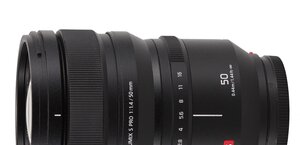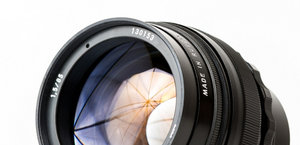Tamron 150-500 mm f/5-6.7 Di III VC VXD
4. Image resolution
The standard formula above, repeated in all our tests, describes well lenses up to a focal length of about 200 mm inclusive. For longer instruments we have to modify it a bit and we do so for reasons described in more detail in our test of the Sigma S 500 mm f/5.6 DG DN OS.
Let's remind here that the lenses which apertures start near f/5.6 are simply unable to break resolution records because of diffraction limits. By f/5.6 that limit reaches 73-75 lpmm so it is an absolute upper limit of what an instrument of that type can achieve. In reality no real life lens is able to work in their diffraction limit up from the maximum relative aperture. A diffraction limit by f/8.0 would be a far better reference level, and it amounts here to 63-65 lpmm.
Please Support UsIf you enjoy our reviews and articles, and you want us to continue our work please, support our website by donating through PayPal. The funds are going to be used for paying our editorial team, renting servers, and equipping our testing studio; only that way we will be able to continue providing you interesting content for free. |
- - - - - - - - - - - - - - - - - - - - - - - - - - - - - - - - - - - - - - - - - - - - - - - -
Let's check how the performance of the Tamron 150-500 mm f/5-6.7 Di III VC VXD in the frame centre compares. Its results at 150, 300, and 500 mm presents a graph below.

It will be even easier to compare the results of the tested lens if you compare them to the results of the Sigma S 5.6/500. Of course we don't mean here any direct duel because the Sigma is in a different league, an expensive fixed-focal lens. It would be difficult to expect a zoom three times cheaper to jeopardize its position in any way. We rather want to know the upper limit of the whole aperture range. The next graph once again presents the performance of the Tamron in the frame centre at particular focal lengths, this time compared to the respective Sigma results.
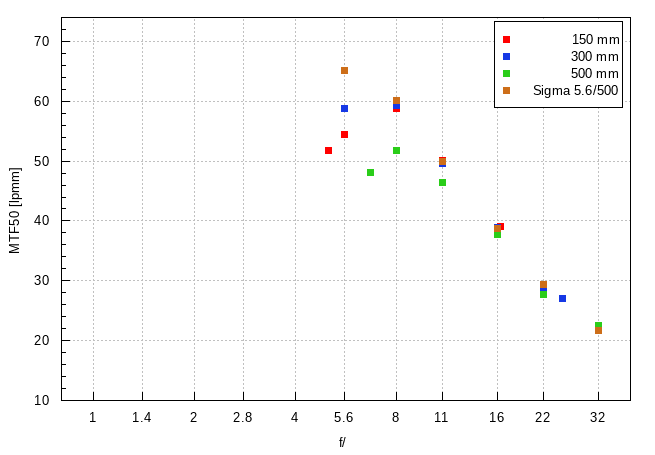
In places where the Tamron is as fast as the Sigma, so in the 150-300 mm range, it fares really well. In fact already by f/8.0 the performance of this zoom lens is, within the margin of error, the same as the performance of the Sigma. The result by f/5.6 and at the 300 mm focal length is a very nice accent as well, where the Tamron is able to get close to a very high level of 60 lpmm.
We knew from the very beginning that at 500 mm the situation would be worse, because of the f/6.7 aperture. Taking into account the fact that diffraction doesn't allow here the Tamron to spread wings, its performance is quite decent anyway. In the aperture range from f/6.7 to f/11 we are able to reach really crisp, sharp images that are able to satisfy even more demanding users.
Now let's check how the tested lens fares on the edge of the APS-C sensor – an appropriate graph you can find below.
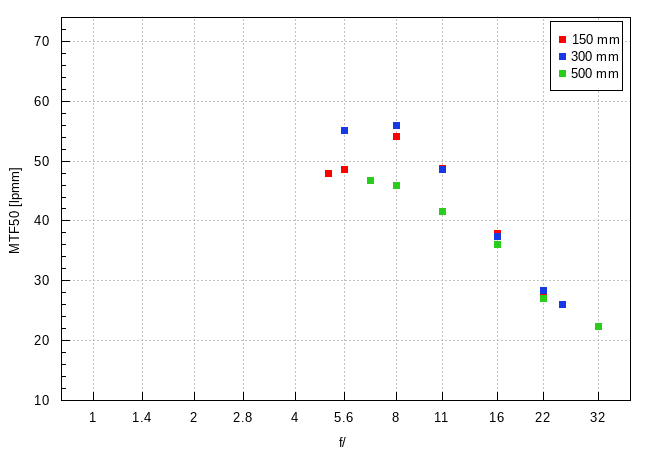
Here also the performance is surprisingly good. In all cases, up from the maximum relative aperture, you get results around 50 lpmm so safely above the decency level. It is also interesting that, at the maximum focal length, the area near f/6.7 is also corrected the best.
Now let's glance at the performance on the edge of full frame.
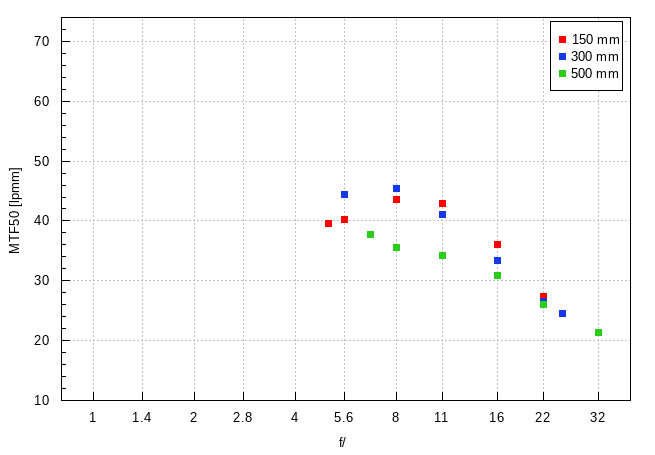
This time you can spot first weaknesses. The maximum focal length for example – there are no results you could call sensible. Similar situation can be observed at the maximum relative aperture at 150 mm. The middle of the range fares the best, as you deal with a fully decent image quality at that place, even in the wide area of the maximum relative aperture.
The summary of this chapter can be only positive. The Tamron's task was difficult but it managed to deliver the goods. The lens fares well in the frame centre and on the edge of the APS-C sensor; with its parameters and its price, not exceeding $1200, it would be foolish to demand more.
At the end of this chapter, traditionally, we present crops taken from photos of our resolution chart; they were taken from JPEG files saved along RAW files we used for the analysis above.
| A7R IIIa, JPEG, 300 mm, f/8.0 |
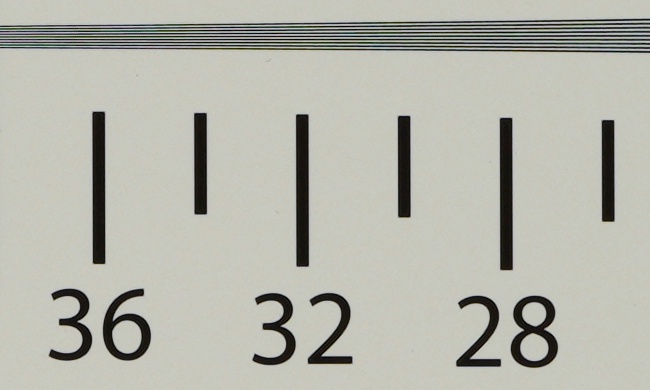 |
| A7R IIIa, JPEG, 500 mm, f/6.7 |
 |




